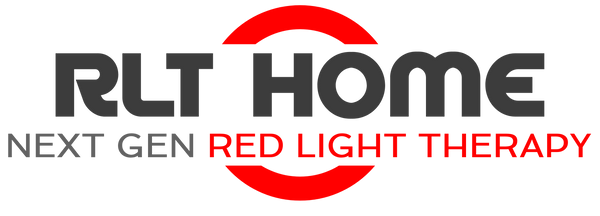
Red Light Therapy and Collagen: The Ultimate Guide
Collagen is an essential protein that keeps your skin and muscles supple, your bones from becoming brittle, and your blood healthy.
The stimulation of collagen production is one of the key processes through which red light therapy bestows health benefits.
In this article, we will examine the role of collagen in your body and how red light therapy elevates your natural production of this vital, restorative building block.
Table of Contents
What Is Collagen?
Collagen is the primary structural protein in your body, and the most abundant. Collagen makes up about one-third of the protein in your body as a whole and approximately 75 percent of the protein content of your skin, the largest bodily organ.
Elements of your body structured by collagen include:
- Skin
- Cartilage, bones, and bone marrow
- Muscles, ligaments, and tendons
- Blood vessels
- Hair
- Nails
- Corneas
- Teeth
- Lymphatic system
- Connective tissues
- Liver, kidneys, and other major organs
Derived from the Greek word “kólla”, which means glue, collagen is the substance that binds these things together. Your body would not be a collective whole without collagen.
There are 28 different types of collagen, each characterized by its unique organic composition. About 90 percent of your body’s collagen is Type 1, with the remaining 10 percent falling mainly into Types 2 through 5.
- Type 1: Composed of dense fibers, Type 1 collagen is found in your skin, internal organs, bones, tendons, connective tissue, and teeth.
- Type 2: Composed of loose fibers, Type 2 resides primarily in your joints and cartilage.
- Type 3: Found in your bone marrow and lymphatic tissues, Type 3 collagen supports your muscle structure and arteries.
- Type 4: Thin sheets of collagen surrounding most bodily tissues, Type 4 assists with filtration.
- Type 5: This type of collagen is found in your hair and the surfaces of certain cells.
The remaining 23 types of collagen are less specialized and exist at trace levels within your body.
How Does Red Light Therapy Stimulate Collagen Production?
When red light is radiated on your skin, the wavelengths penetrate your skin to reach your cells. [1] The energy-production centers of your cells (mitochondria) communicate with the protein cytochrome c oxidase, triggering your body to create adenosine triphosphate (ATP). The organic compound ATP acts as a host for the transfer of cellular energy. Increased energy within your cells activates the creation of fibroblasts. [2]
Fibroblasts are significant because these are the connective tissue cells that produce collagen. Red light therapy is an excellent means by which to optimize your collagen production and realize the resulting health advantages.
What Are the Health Benefits of Collagen?
Skin elasticity decreases over time and your bones become more brittle, along with other collagen-related signs of aging. This is because your body gradually produces less collagen as you age.
Red light therapy helps to restore more abundant, youthful levels of collagen in addition to treating numerous conditions and diseases.
An abundance of collagen promotes all of the following:
- Skin quality and elasticity [3]
- Anti-aging including wrinkle prevention [3]
- Treatment of acne and other skin conditions like psoriasis and eczema [3]
- Ocular health
- Increased athletic performance, physical fitness, and decreased recovery time after exercise [4] [6] [7]
- Accelerated wound and injury healing [4] [5] [6] [7]
- Building muscle mass
- Weight loss, boosting metabolism, and cellulite reduction
- Increased testosterone in men
- Treatment of dementia and degenerative disorders such as Parkinson’s and Alzheimer’s diseases
- Healthy thyroid function
- Treatment of depression and anxiety
- Increased cognitive function and ability to concentrate
- Reduction of inflammation, leading to relief from pain caused by fibromyalgia, arthritis, and other conditions
- Regulation of sleep patterns
This is just a partial list of the ways that collagen impacts your body and overall well-being.
What Else Impacts Your Body’s Natural Production of Collagen?
Diet and Lifestyle Choices
As the old saying goes, “You are what you eat”. Your body makes collagen from amino acids, found in food. Eating well is key to making healthy collagen.
Your diet should be rich in:
- Meat, poultry, and fish
- Nuts and seeds
- Milk, cheese, eggs, and other dairy
- Beans, chickpeas, lentils, mushrooms, asparagus, and leafy green vegetables
- Soybeans and tofu
- Colorful produce like bell peppers, tomatoes, and citrus fruits
- Whole grains
Eating well helps your body make collagen. But, bad habits like smoking and too much sugar can slow it down.
To boost collagen, eat well and live healthily.
What About Collagen Supplements?
Collagen supplements come in pills, creams, and injections. They claim to prevent bone loss, increase muscle, and improve heart health. They also promise stronger hair and nails.
Don't believe everything these products say. The collagen in them is not natural. It's made in a lab. While some creams might help wounds heal, their overall benefits are not proven.
Most collagen supplements aren't checked by the FDA. This means they might not be safe or work well. Red light therapy, on the other hand, is safe and proven to boost collagen naturally.
Supplements won't fix a bad lifestyle. Focus on healthy habits and a good diet. Add red light therapy for the best results. Investing in one of the best red light therapy panels for at-home use can be a powerful addition to a healthy lifestyle.
Red light therapy is simple to use at home. There are many devices to fit your needs. For detailed instructions, you can refer to our official Total Spectrum Usage Guide.
Resources
[1] The nuts and bolts of low-level laser (light) therapy
[3] Red light accelerates the formation of a human dermal equivalent
[6] LLLT improves tendon healing through increase of MMP activity and collagen synthesis







